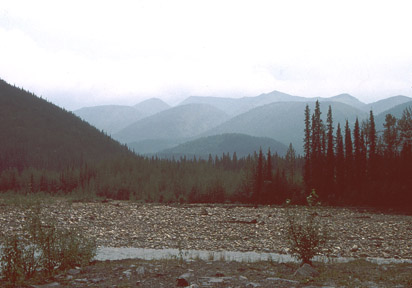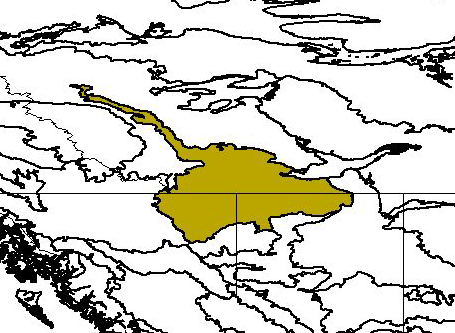
Looking west into the mountains near Ft. Nelson, British Columbia (c) 2005 Scott and Ruth Bassett
Bioimages home (click on an image to enlarge)
view
this page in its intended navigation context
Muskwa/Slave Lake forests
(WWF
ecoregion NA0610)

Looking west into the mountains near Ft. Nelson, British Columbia
(c)
2005 Scott and
Ruth Bassett

Source of bioregions data:
Olson, D. M. and
E. Dinerstein. The Global 200: Priority ecoregions for global conservation. (PDF
file) Annals of the Missouri Botanical Garden 89:125-126.
Distinctiveness (1=highest,4=lowest): 1
(globally outstanding)
This region contains one of the most diverse and intact large mammal system,
including relatively undisturbed predator-prey systems.*
Conservation Status (1=most endangered, 5=most
intact): 4 (relatively stable)
About 75% of the ecoregion is intact. Logging and transportation corridors
have degraded some areas.*
 Populus tremuloides (quaking aspen)
Populus tremuloides (quaking aspen) | Picea glauca | (white spruce) |
Abies balsamea (balsam fir)
 Picea mariana (black spruce)
(c) 2004 Maurice J. Kaufmann
Picea mariana (black spruce)
(c) 2004 Maurice J. Kaufmann
* Ricketts, T.H., E. Dinerstein, D.M. Olson, C.J. Loucks, et al. (1999) Terrestrial Ecoregions of North America: A Conservation Assessment. World Wildlife Fund - United States and Canada. Island Press, Washington, D.C. pp. 360-361.
Except as noted, images copyright 2002-2005 Steve Baskauf - Terms of use